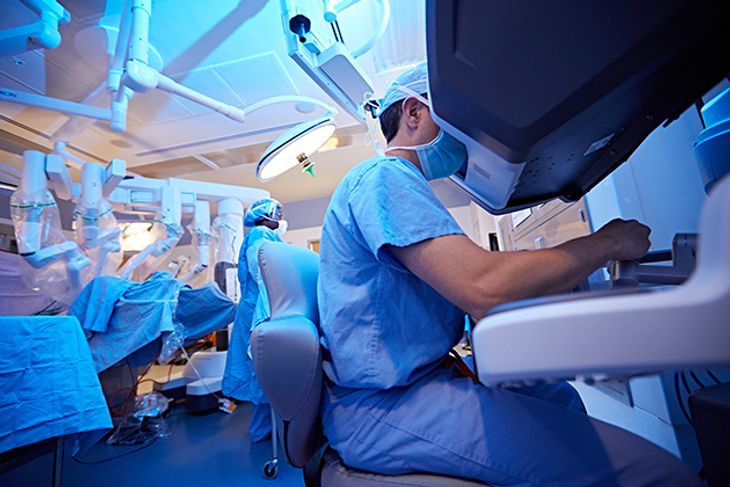Robotic Surgery

A form of minimal invasion surgery that uses miniaturized surgical instruments and computer-assistance for operating the patients making a series of small (quarter-inch) incisions is called Robotically Assisted Surgery. Robotic Surgery has become relatively popular in the last decade as it eliminates unnecessary blood loss during surgery, by limiting the requirement of incisions, which eventually help in faster recovery.
The main motive of inventing robotically-assisted (computerized) surgery was to overcome the restraints of pre-existing minimally invasive medical procedures and enhance the performance of the surgeons during open surgeries.
Benefits of Robotic Surgery
Reduced Blood Low
Faster Recovery
Minimal scarring because of the use of smaller incisions
Less trauma experience by the body
Robotic Surgery VS Conventional Surgery
Robotic surgery might be a little expensive than the conventional methods of surgery, but the following factors will prompt you to select it over the traditional means of surgery:
Cost – there is a huge gap between these two types of surgery when it comes to comparing cost. Robotic surgery demand use of latest technology which adds more digits on the bill.
Incision Size – Usage of miniaturized instruments eliminates the need of large incisions, which are a necessity for operating an open-heart or gastric bypass surgeries.
Recovery – Robot arms are more petite and flexible and demand smaller incisions that heal faster. Traditional surgical procedure demand bigger incision as everything is done by the surgeons hands.
Preciseness – A human hand is prone to trembling but when talking about a robotic arm it moves and conducts the surgery very precisely.
Risk – Both types of surgeries involve an equal amount of risk which is the life of the patient.
Robotic Surgery Procedure
The use of robotic-assistance while open surgeries have shown some substantial results in enhancing the performance of the surgeons giving them the capacity to work effectively even while dealing with complex cases.
Da Vinci’s – Surgical Robot
It is the most advanced surgical robot on the planet that consists of three arms, that help the surgeon by providing him/her maximum amount of precision and motion. Da Vinci also has a fourth arm which consists of an HD magnified 3-D camera that allows the surgeon to get a close look at the patient.
The surgeon is responsible for controlling these instruments through a console. By guiding the robots movements with the master control, the surgeon is able to operate with the four arms simultaneously. The three arms allow movement and surgical procedure inside the patient while the camera allows the surgeon to analyze the operating site more clearly. Movements made by the surgeon on the master controls are replicated exactly by the robot. The surgeon can also manage the speed of the robots movement. The console for controlling the robots is designed to allow perfect alignment with the surgeon’s hands and eyes, minimizing surgery failures.
Conclusion
Despite being an effective surgical method, robotic surgery is not preferred by most doctors. There are only a few limited hospitals and doctors in India who use this technology at 360 degrees in all surgical procedures. Surgeons with 20 or so years of professional experience prefer using their hands instead of robotic arms or instruments as they are well practised to operate in a certain way. If a surgeon who is not acquainted with this technology, uses this method, he/she is potentially increasing the risk for the patient. A good percentage of surgeon believe that both robotic and conventional surgery have similar risk factors, as the robotic instruments are also being handled by a surgeon only. But the benefits of this advanced technology are too good to ignore.
We invite you to explore Medmonks.com to learn more about this next-gen technology that has the potential to bring a evolution in the medical industry.





